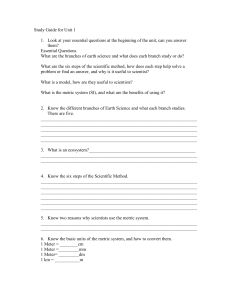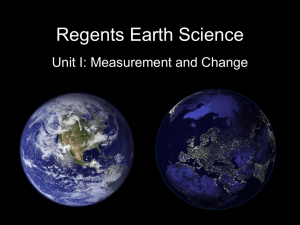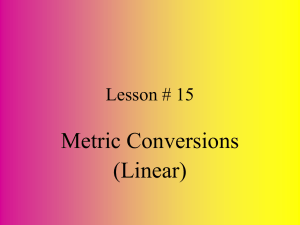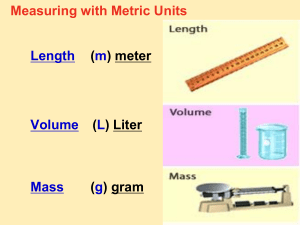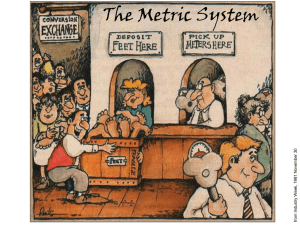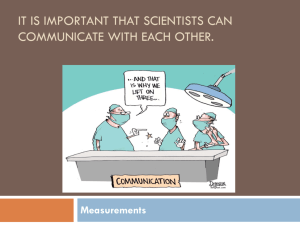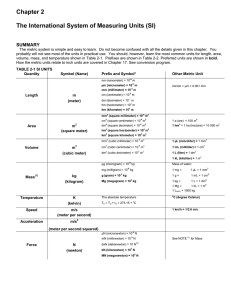Metric Measurements Guide: Grams, Meters, Liters
advertisement
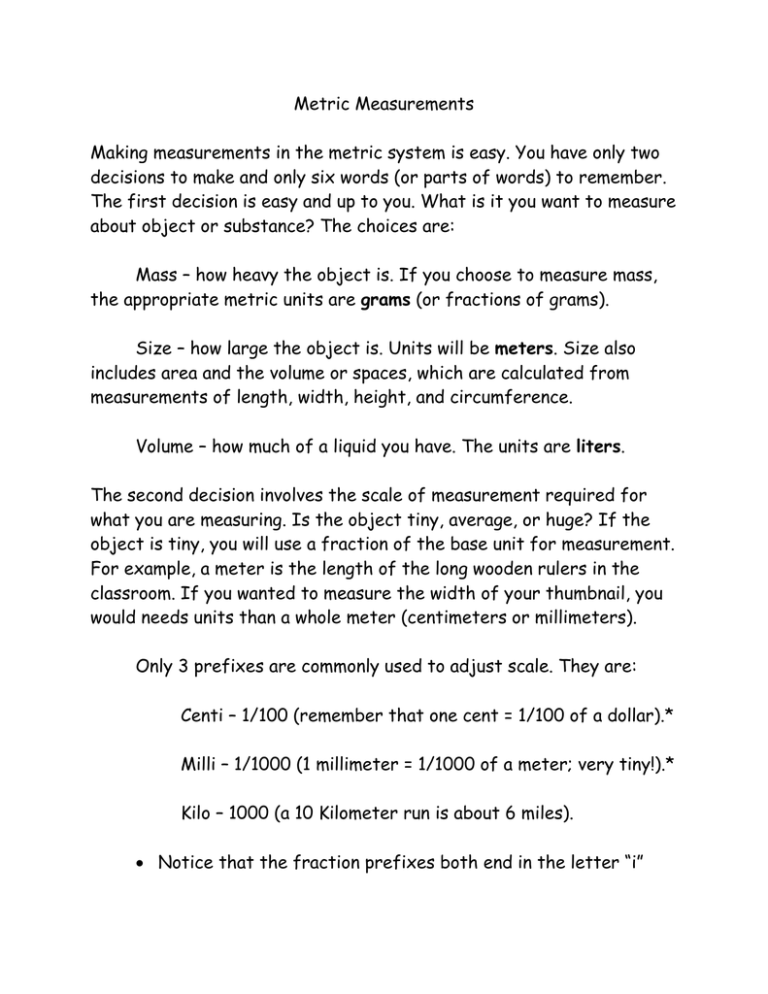
Metric Measurements Making measurements in the metric system is easy. You have only two decisions to make and only six words (or parts of words) to remember. The first decision is easy and up to you. What is it you want to measure about object or substance? The choices are: Mass – how heavy the object is. If you choose to measure mass, the appropriate metric units are grams (or fractions of grams). Size – how large the object is. Units will be meters. Size also includes area and the volume or spaces, which are calculated from measurements of length, width, height, and circumference. Volume – how much of a liquid you have. The units are liters. The second decision involves the scale of measurement required for what you are measuring. Is the object tiny, average, or huge? If the object is tiny, you will use a fraction of the base unit for measurement. For example, a meter is the length of the long wooden rulers in the classroom. If you wanted to measure the width of your thumbnail, you would needs units than a whole meter (centimeters or millimeters). Only 3 prefixes are commonly used to adjust scale. They are: Centi – 1/100 (remember that one cent = 1/100 of a dollar).* Milli – 1/1000 (1 millimeter = 1/1000 of a meter; very tiny!).* Kilo – 1000 (a 10 Kilometer run is about 6 miles). Notice that the fraction prefixes both end in the letter “i” Choose the unit that will allow you to report your measurement in the most convenient number. Example: Distance from Mesa to Tucson = 167,00 meters but 167 km (kilometers) is much easier to read on a road sign. My thumbnail = 16mm = 1.6cm = - 0.016mm. 16 mm (millimeters) seems easiest to use as it doesn’t involve decimal fractions. There you have it – 6 words: Gram Meter Liter millicentikilo- To make it even more convenient, mass, size, and volume measurements are all related in the following manner: 1 cm3 of water has a mass of 1 g and has a liquid volume of 1 ml. (1 cm3 is the space of a square box with each side 1 cm long) Your lab will allow you to practice using the Metrics System. The more you measure to more practice you get. PLEASE ASK IF YOU HAVE QUESTIONS!!!!
